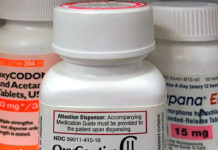a trusted adult. Middle schoolers will learn about how communication skills can foster healthy decisions and recognizing the consequences of decisions made. And high school students will discuss the impact of their decisions, the wide range of consequences flowing from the opioid epidemic, and how to get addiction recovery treatment, should it become necessary.
The HOPE curriculum hopes to allow students to understand the impact of substance abuse on families and communities and have the communication skills to refuse drugs.
Upon completion of the program, “students should have functional knowledge — the knowledge that’s needed to make healthy decisions to be drug-free and have the skills to execute that, whether it be decision-making skills or communication skills,” Lorson said.
As the program progresses, more resources will be added. Lorson said that parents will be able to access additional online information that can help them talk to their children about addiction, beginning in the fall of 2018.
However, the first step in the HOPE curriculum is implementing these lessons in the academic environment. “School plays an integral part in prevention, and I’m excited that Ohio is taking the steps to make sure that teachers and schools are equipped with the tools students need,” Lorson said. “I’m proud that we’ve been proactive with this.”















